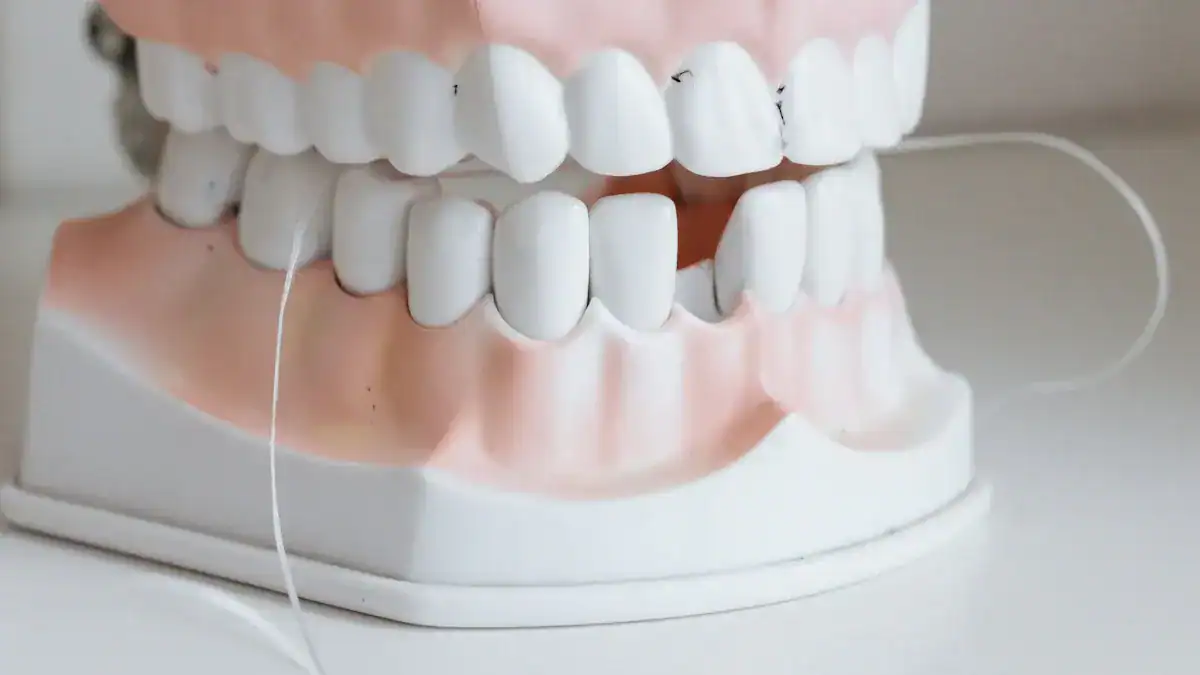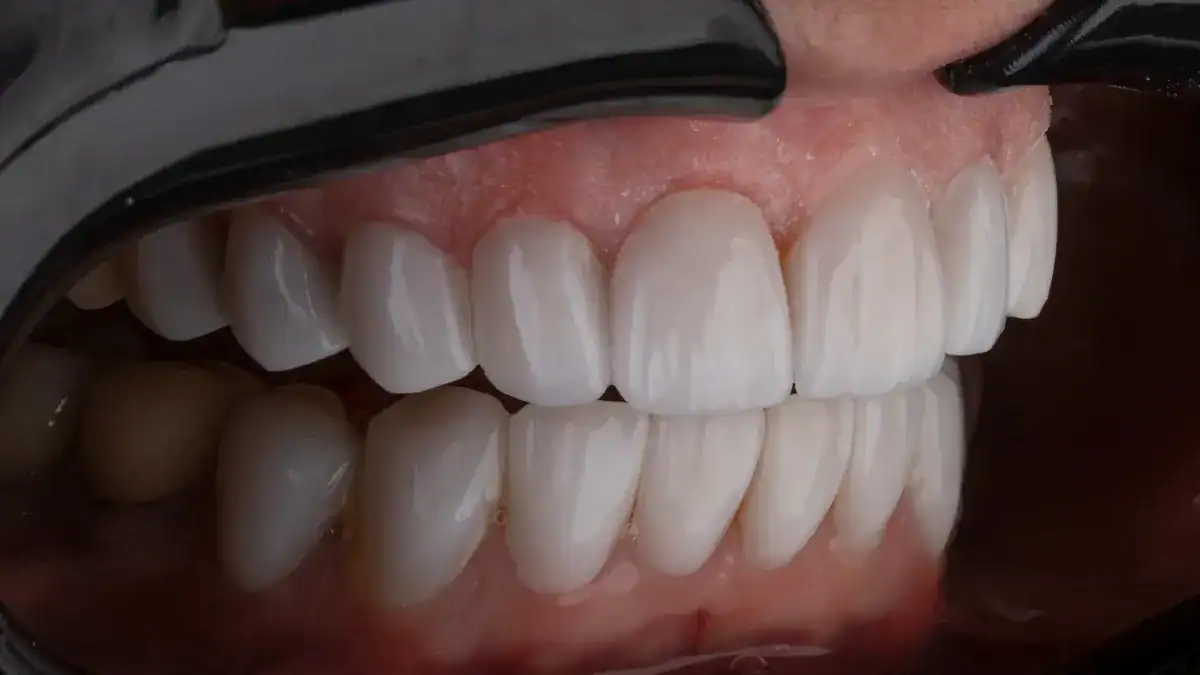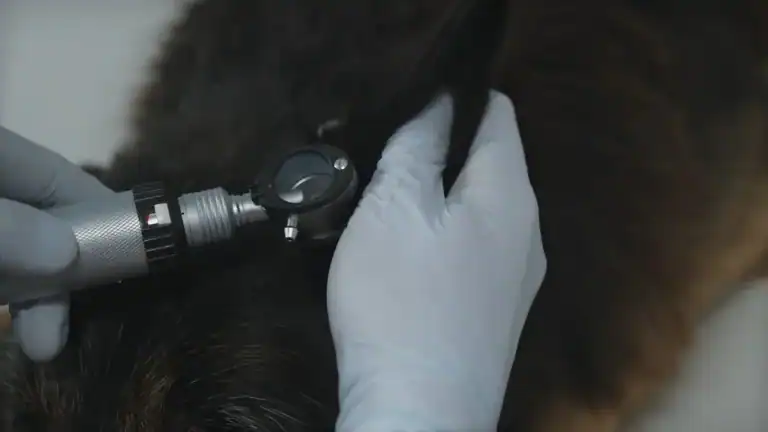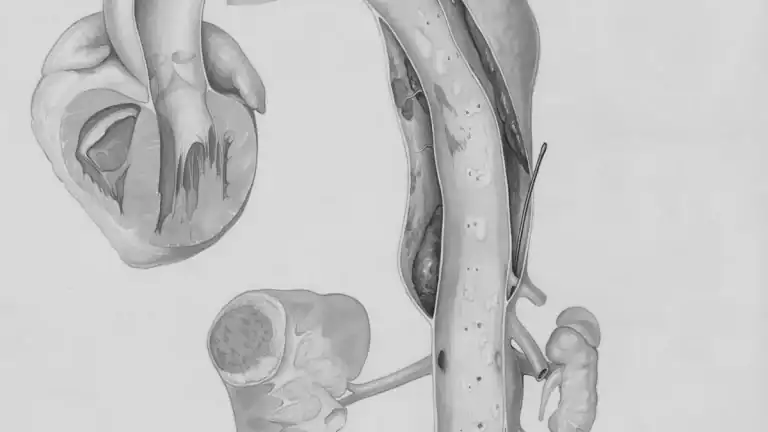
A tooth chart is a detailed dental record. It shows the location and condition of all your teeth. These dental diagrams help dentists track your oral health. Understanding your tooth chart helps you discuss your dental health with professionals. You will see different tooth diagrams for adult teeth and child teeth. Each set of teeth has its own unique charting system for its specific teeth. This guide will explain both types of dental charts.
Key Takeaways
- A tooth chart is a map of your teeth. It shows where each tooth is and its condition. Dentists use it to check your mouth health.
- Adults have 32 permanent teeth. Dentists use the Universal Numbering System to name them. Each tooth gets a number from 1 to 32.
- Children have 20 primary teeth, also called baby teeth. Dentists use the Palmer Notation System for these. It uses letters A to E for each tooth.
- Tooth charts help dentists find problems and plan treatments. They also help you understand your own dental health.
- Different systems exist to name teeth. This helps dentists talk clearly about your teeth. It makes sure everyone knows which tooth they mean.
Adult Tooth Chart Explained

Adult Tooth Chart Definition
An adult tooth chart is a map of your permanent teeth. It shows each tooth’s location and condition. This chart helps your dentist track your oral health over time. It is a vital tool for understanding your dental needs. Most adults have 32 permanent teeth by age 21. These teeth are crucial for eating, speaking, and maintaining your facial structure.
Universal Numbering System
Dentists use specific systems to identify each tooth. The Universal Numbering System is very common in the United States. This system assigns a unique number to each of your permanent teeth.
Here is how the Universal Numbering System works:
- You start with tooth #1. This is your upper right third molar, also known as a wisdom tooth.
- The numbering continues along your upper teeth towards the left side of your mouth.
- After reaching the last upper tooth, the count moves to your lower jaw.
- Tooth #17 is your lower left third molar.
- The numbering then progresses along your lower teeth to the right side.
This table shows the numbers for each type of tooth:
| Tooth Number | Tooth Name (Upper Right) | Tooth Name (Upper Left) | Tooth Name (Lower Left) | Tooth Name (Lower Right) |
|---|---|---|---|---|
| 1, 16, 17, 32 | 3rd Molar (Wisdom Tooth) | 3rd Molar (Wisdom Tooth) | 3rd Molar (Wisdom Tooth) | 3rd Molar (Wisdom Tooth) |
| 2, 15, 18, 31 | 2nd Molar (12-yr molar) | 2nd Molar (12-yr molar) | 2nd Molar (12-yr molar) | 2nd Molar (12-yr molar) |
| 3, 14, 19, 30 | 1st Molar (6-yr molar) | 1st Molar (6-yr molar) | 1st Molar (6-yr molar) | 1st Molar (6-yr molar) |
| 4, 13, 20, 29 | 2nd Bicuspid (2nd Premolar) | 2nd Bicuspid (2nd Premolar) | 2nd Bicuspid (2nd Premolar) | 2nd Bicuspid (2nd Premolar) |
| 5, 12, 21, 28 | 1st Bicuspid (1st Premolar) | 1st Bicuspid (1st Premolar) | 1st Bicuspid (1st Premolar) | 1st Bicuspid (1st Premolar) |
| 6, 11, 22, 27 | Cuspid (Canine/Eye Tooth) | Cuspid (Canine/Eye Tooth) | Cuspid (Canine/Eye Tooth) | Cuspid (Canine/Eye Tooth) |
| 7, 10, 23, 26 | Lateral Incisor | Lateral Incisor | Lateral Incisor | Lateral Incisor |
| 8, 9, 24, 25 | Central Incisor | Central Incisor | Central Incisor | Central Incisor |
This system helps your dental team communicate clearly about your teeth numbers. An adult teeth numbers chart makes sure everyone understands which tooth they are discussing.
Adult Tooth Names and Types
Your permanent dentition includes different types of teeth. Each type has a special job. You have four incisors, two canines, four premolars, and four molars in each jaw. This makes up your full set of 32 teeth.
- Incisors: These are the eight teeth at the very front of your mouth. You have four on top and four on the bottom. They have sharp, flat edges. You use them for biting into food and cutting it into smaller pieces.
- Canines: You have four canines, two on top and two on the bottom. They sit next to your incisors. Canines are pointed and help you tear food, especially tougher items. Dentists sometimes call them cuspids or eye teeth.
- Premolars: You have eight premolars, four on top and four on the bottom. They are behind your canines. Premolars, also called bicuspids, have a flatter biting surface. They help crush and grind food, preparing it for the molars.
- Molars: You have twelve molars, six on top and six on the bottom. These are the largest teeth and sit at the back of your mouth. Molars have broad, flat surfaces with multiple cusps. They are your main chewing teeth. They grind food into very small pieces before you swallow.
Maxillary and Mandibular Arches
Your teeth sit in two main arches: the maxillary arch and the mandibular arch. These arches are important parts of your oral anatomy.
- Maxillary Arch (Upper Jaw): This arch holds your upper teeth. It is part of your skull and does not move. The maxillary arch forms the roof of your mouth. It also helps shape your nasal cavity and eye sockets. It has features like the canine eminence, which is a ridge from your canine root. This arch houses your central and lateral incisors, canines, two premolars, and three molars on each side.
- Mandibular Arch (Lower Jaw): This arch holds your lower teeth. It is the only movable bone in your face. The mandibular arch connects to your skull at the temporomandibular joint. This joint allows you to open and close your mouth. It has features like the lingula and the mental foramen. This arch houses your lower incisors, canines, two premolars, and three molars on each side.
Anterior and Posterior Teeth
Dentists also categorize your teeth based on their position in your mouth. You have anterior teeth and posterior teeth.
- Anterior Teeth: These are your front teeth. They include your incisors and canines.
- Location: They are at the front of your mouth.
- Function: They are important for how your smile looks. You use them for cutting and tearing food. They also help you form speech sounds clearly.
- Structure: Incisors have sharp, chisel-shaped edges. Canines have a pointed shape.
- Visibility: These teeth are very visible when you smile or talk.
- Posterior Teeth: These are your back teeth. They include your premolars and molars.
- Location: They are at the back of your mouth.
- Function: Their main job is to grind and crush food. This process is called mastication.
- Structure: They have more complex surfaces with cusps. Molars are large and strong.
- Visibility: These teeth are less visible. Their primary role is functional. They also help maintain your jaw alignment and prevent your bite from collapsing.
Understanding your adult teeth chart helps you know more about your dental health.
Child Dental Chart Explained

Your child’s dental health is very important. A child’s tooth chart helps track their oral development. It shows the position and condition of their primary teeth. This chart is a key tool for dentists. It helps them monitor growth and spot any potential problems early.
Primary vs. Permanent Teeth
You might hear them called baby teeth, milk teeth, or deciduous teeth. These primary teeth are different from permanent teeth. They have unique features and roles.
| Feature | Primary Teeth | Permanent Teeth |
|---|---|---|
| Other Names | Baby teeth, milk teeth, deciduous teeth | Adult teeth |
| Composition | Thinner enamel | Thicker enamel |
| Size | Smaller | Larger |
| Color | Whiter | Less white |
| Roots | Shorter and thinner | Longer and stronger |
| Number | 20 | 32 (including wisdom teeth) |
| Eruption Start | First teeth (front, top/bottom) | Molars (first permanent teeth to erupt) |
| Primary Role | Placeholders, guide permanent teeth, shape face, aid eating/speaking | Replace primary teeth, provide lifelong chewing function |
| Replacement | Replaced by permanent teeth | Not replaced |
Palmer Notation System
Dentists use the Palmer Notation System for primary teeth. This system uses letters for primary teeth numbers. It helps identify each primary dental tooth.
The Palmer Notation System uses five English letters (A–E). It combines these letters with a special grid. This designates the primary teeth within a particular quadrant. Within the quadrants, primary teeth are identified by letters A to E. This starts from the central incisor at the midline. It extends outward to the molars.
Here is how the letters correspond to the teeth:
- A = central incisor
- B = lateral incisor
- C = canine
- D = 1st molar
- E = 2nd molar
For example, ‘B┐’ denotes the primary right lower lateral incisor. This system allows for clear communication among dental professionals.
Child Tooth Names and Eruption
Your child’s primary teeth erupt in a certain order. The eruption of deciduous teeth typically occurs between 4 and 36 months of age. The usual order of emergence for primary teeth is central incisor, lateral incisor, first molar, canine, and then second molar. This happens in both the upper and lower arches.
This chart shows the typical eruption timeline for primary teeth:
Importance of Primary Teeth
Primary teeth play a big role. They guide permanent teeth into place. They also help your child eat and speak clearly. Losing primary teeth too early can cause problems.
Premature loss of primary teeth can lead to several issues:
- Articulatory Disorders: Your child’s speech can be affected. This can lead to speech distortion.
- Orthodontic Disorders: Early tooth loss is linked to malocclusions. These often need orthodontic treatment. This includes problems like crowding or ectopic eruption.
- Psychosocial Disorders: Children may feel negative impacts on their quality of life. This includes aesthetics and social interactions. This is especially true if front teeth are lost. Some children might feel unattractive compared to their friends.
One study looked at the early loss of a primary maxillary first molar. It found that in most cases (88.9%), there was no crowding of permanent teeth later. Sometimes, the permanent dentition was more crowded at a different site. This suggests that space maintainers might not always be necessary in specific situations. This is because arch dimensions can increase over time. However, it is always best to consult your dentist. This can help you understand the best approach for your child.
Common Child Dental Issues
Children can face several common dental problems. Poor oral hygiene often causes these dental issues.
- Tooth Decay (Cavities): This is a very common problem. It affects over 20% of children aged 5 to 11 in the U.S. Poor brushing, flossing, and sugary diets contribute to cavities. Acid from plaque erodes enamel. Cavities in baby teeth are significant. They can lead to infection in the developing permanent teeth. This can happen even before the adult teeth surface.
- Early Childhood Caries (ECC): This is a severe form of decay in very young children (before age 3). It causes pain, infection, and eating difficulties.
- Tooth Sensitivity: This can come from cavities or newly erupted permanent teeth. Acid erosion or enamel wear can also cause it. Teeth grinding (bruxism) or a cracked filling are other causes.
- Pediatric Gingivitis and Gum Disease: Poor oral hygiene often causes this. Crooked or crowded teeth are hard to clean. This can also lead to gum problems.
- Orthodontic Problems: These are often genetic. Jaw size and shape influence them. They can cause issues like overbite, underbite, or spacing problems.
- Excessive Thumb Sucking: If this habit continues past the toddler stage, it can cause developmental issues. It can lead to an open bite. This affects biting, chewing, and speech.
- Teeth Grinding (Bruxism): This is common in babies and toddlers. It often comes from discomfort from erupting teeth. If it continues, it can erode enamel. This can lead to decay or sensitivity.
- Bad Breath (Halitosis): Bacteria feeding on food particles and plaque cause this. It can also signal gum problems, dry mouth, or other health issues.
- Dental Trauma: Accidents during play or sports can damage teeth. This can result in chipped, broken, or knocked-out teeth. These need immediate dental care.
Understanding the Tooth Number Chart Systems
A tooth numbering system is a standardized dental notation. It ensures clear communication among dental professionals. You will encounter different systems for identifying your teeth. Each system has its own method.
Universal System for Adults
The Universal Numbering System is very common in the United States. This system assigns a unique number to each permanent tooth. You start with tooth #1, your upper right third molar.
The numbers continue sequentially around your upper jaw, then drop to your lower left third molar (#17), and continue around your lower jaw. This system uses numbers 1 through 32 for all your permanent teeth. It provides a simple, continuous sequence for identifying each tooth.
Palmer System for Children
The Palmer Notation System is often used for primary teeth, especially in the United Kingdom.
This system uses letters and a special grid. You identify primary teeth with letters A through E. ‘A’ represents the central incisor, and ‘E’ represents the second molar. A symbol indicates which quadrant the tooth is in. For example, ‘A’ in the upper right quadrant means your upper right central incisor. This system helps dentists track your child’s developing teeth.
FDI World Dental Federation System
The FDI World Dental Federation System is widely used internationally, including in Canada and most European countries. This system uses a two-digit number for each tooth.
The first digit identifies the quadrant. Quadrants are numbered 1 (upper right) to 4 (lower right) in a counterclockwise direction. The second digit indicates the tooth’s position within that quadrant. For example, tooth 11 is your upper right central incisor. Tooth 21 is your upper left central incisor. This method makes it easy to communicate about specific teeth numbers globally.
| System | Methodology |
|---|---|
| FDI World Dental Federation System | Uses a two-digit number. The first digit identifies the quadrant. The second digit indicates the tooth’s position within that quadrant. Quadrants are numbered 1 (upper right) to 4 (lower right) counterclockwise. |
| Universal Numbering System | Assigns a single number sequentially to each tooth. It starts from the upper right third molar (1) and moves clockwise to the lower right third molar (32). |
| Palmer Notation Method | Employs a symbol to designate the quadrant. It uses a number (1-8 for adult teeth, A-E for primary teeth) to indicate the tooth’s position from the midline. |
Why Different Systems Exist
Different tooth number chart systems exist for several reasons. Historically, various dentists developed their own methods.
Corydon Palmer described his system in 1870. Julius Parreidt proposed the Universal Numbering System in 1882. These systems gained regional adoption. For instance, the Universal system became popular in the USA. The Palmer system was widely used in English-speaking countries.
New systems also developed to fix problems with older ones. Early systems were sometimes hard to pronounce or difficult for computers to use. The FDI system, introduced in 1970, aimed to be simple, easy to pronounce, and adaptable for modern technology. The goal was to create a global system. The existence of multiple teeth number charts can sometimes cause confusion. This drives the need for clear, standardized dental communication.
Importance of Tooth Charts
Diagnosis and Treatment Planning
Tooth charts are vital tools. They help your dentist diagnose problems. They also help plan your treatment. A good tooth chart enhances diagnostic accuracy. It combines dental diagrams with clinical findings. This system allows quick access to your patient information. This speeds up the diagnosis process. Comprehensive data supports informed decisions. It clearly records your dental conditions. This includes cavities and existing fillings. This is basic for accurate assessment. It also helps educate you about your care.
Tracking Dental History
You can track your dental health over time with tooth charts. They show your past procedures. They also show your current conditions. They highlight potential areas of concern. Tooth charts record your present and missing teeth. They list existing restorations like fillings or crowns.
They note any decay or damage. They also show abnormalities in your tooth structure. This includes your treatment needs. They record gum health measurements. This includes pocket depths and gum recession levels. They also note bleeding points and the mobility of teeth.
Professional Communication
Standardized tooth charts help dental professionals communicate clearly. Systems like the Universal Numbering System are very important. They offer a clear way to identify and discuss specific teeth numbers.
This helps with diagnosis and treatment planning. It also improves record-keeping. It ensures all professionals use the same language. This creates a common language among them. This helps avoid miscommunication. Especially with extra teeth or unusual cases. Clear communication ensures better patient care.
Forensic Applications
Tooth charts are valuable in forensic dentistry. They help identify people. They meticulously record your teeth and oral structures. They show the position, size, and shape of your teeth.
They document any fillings. X-rays provide more information about roots and bone. Your teeth have many unique characteristics. These include size, shape, and spacing. The combinations of unrestored, filled, or missing teeth are vast. This creates unique patterns. These patterns are very useful for identification. Dental anomalies also serve as unique identifying features.
Tooth Chart Applications
You use tooth charts in many practical ways. They help dentists track your oral health and plan treatments.
Children’s Eruption Charts
A tooth eruption chart shows you how your child’s teeth develop. It illustrates when teeth emerge and how long each tooth takes to grow. This timeline gives you insights into the start of childhood teeth and potential future dental issues. The American Dental Association provides eruption charts for both baby and permanent teeth. Printable full-sheet tooth charts offer a convenient way for families to monitor dental development.
Your child’s primary teeth eruption chart shows incisors typically appear around six months. They are fully erupted within 18 months. Canines generally erupt around the same time. First molars emerge between three and five years of age. A permanent teeth eruption chart shows the first molar is usually the first permanent tooth to emerge. First premolars erupt between 18 months and three years. Second molars begin to emerge between five and six years. Second premolars typically start erupting around age seven or older.
Periodontal Charting
Periodontal charting helps your dentist assess your gum health. This dental chart records specific measurements for each of your teeth. Dentists note probe depths, which are six measurements per tooth. They record bleeding on probing (BOP) with a red dot. They also track gingival margin position, furcation involvement, and the mobility of your teeth. This detailed dental record helps identify gum disease early.
Orthodontic Charting
Orthodontic charting helps plan and monitor tooth movement. Dentists use high-resolution imaging like CBCT and intraoral scanners. AI-powered diagnostics analyze these images. This detects alignment issues and jaw discrepancies. Treatment planning software then generates predictive models of tooth movement.
This helps dentists select the most efficient plan for your teeth. AI also optimizes aligner sequencing and helps fabricate custom appliances. Remote monitoring systems allow you to upload images from your smartphone. AI software analyzes these for deviations. This helps your orthodontist modify your treatment plan without extra visits. This ensures your dental treatment stays on track.
X-Rays and Tooth Charts
X-rays integrate with your tooth chart to give a full view of your dental health. Imaging software overlays X-ray images directly onto your patient charts. This provides clear, comprehensive views for better clinical decisions. The software includes tools to adjust image opacity for tailored inspection. All images and patient records are fully integrated for immediate access. A visualization system uses lesion location data to design a health risk chart.
It counts occurrences of six dental diseases from panoramic radiographs. It visualizes this information with a radar chart. This system provides a prevalence rate per tooth position using heat maps. You can interact with these heat maps to understand disease distribution.
You now understand the importance of both adult and child tooth charts. These dental diagrams are essential tools. They help you track your dental health. Understanding these tooth diagrams empowers you. You can take an active role in your dental care.
Discuss your dental charts with your dental professional. Ask questions about your teeth. Your dental team uses these charts to monitor all your teeth. This ongoing dental charting maintains lifelong dental wellness for your teeth.
FAQ
What is a tooth chart?
A tooth chart is a detailed record of your teeth. It shows each tooth’s location and condition. Dentists use this diagram to track your oral health. It helps them plan your dental care.
What is the Universal Numbering System?
The Universal Numbering System identifies your permanent teeth. It assigns a unique number from 1 to 32 to each tooth. This system starts with your upper right third molar. It then moves around your mouth.
What is the Palmer Notation System?
The Palmer Notation System identifies your child’s primary teeth. It uses letters A through E for each tooth. A special grid indicates the tooth’s quadrant. This system helps track your child’s developing teeth.
What is the main purpose of a tooth chart?
Tooth charts are essential tools. They help dentists diagnose problems and plan treatments. They track your dental history over time. They also improve communication among dental professionals. This ensures you receive the best care. 🦷




